#2D and 3D applications
Explore tagged Tumblr posts
Text
Unity is the most popular game engine that allows developers to create a wide range of games. That’s why companies choose to hire Unity developers for their game development. In this blog, we have provided 15 reasons why companies should hire Unity developers. We have also provided a list of skills they need to look for while hiring. To understand Unity game development, let’s first look at the definition and why you should choose Unity over Unreal game engine for game development.
4 notes
·
View notes
Text
my aromantic tmnt headcannons:
in the form of rough drawings. sorry.
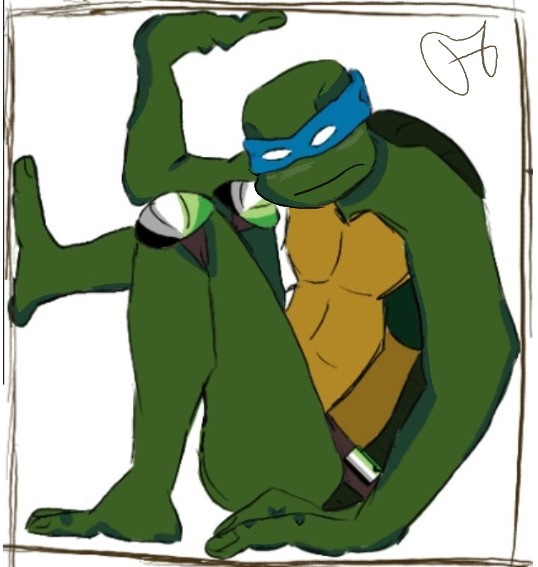

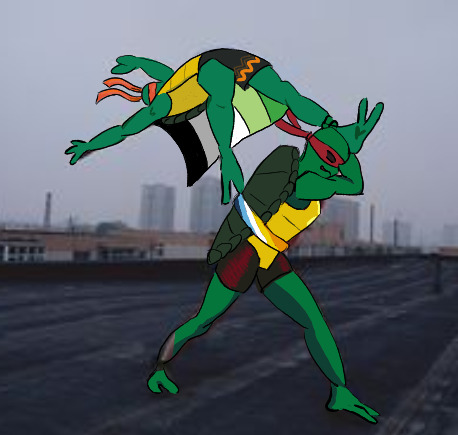
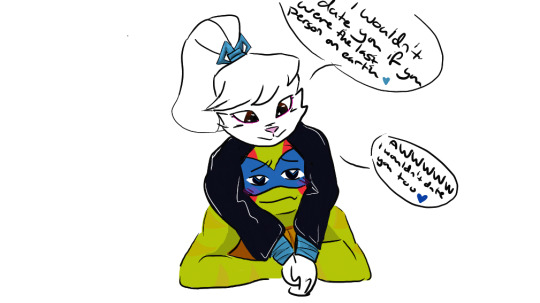
(idk anything about Usagi in the show this is just my au Yuichi i guess)
Yuichi: I wouldn't date you if you were the last person on earth
Leo: AWWWW, I wouldnt date you too!
#this is officially my dumping ground now i guess#dont @ me I have no drawing applications on my computer this is all online#kleki - if anyone knows what that is#MS Paint wasnt having it#all of these were based off of pintrest pictures of course#the top leonardo was meant to be 07 but looks more like 03 to me *sob* how do u draw 2d versions of those 3d fucks???#tmnt#teenage mutant ninja turtles#aromantic leonardo#aromantic raphael#aromantic characters#arospec#aromantic spectrum#tmnt leonardo#tmnt raphael#2007 leo#2003 raph#2003 mikey#2018 leonardo#should i link my aro 18!Leo fic?#idk how tumblr works#i cant colour for shit imma go back to pencil paper sketches#my artwork#if u couldnt tell
23 notes
·
View notes
Text
MIT engineers grow “high-rise” 3D chips
New Post has been published on https://thedigitalinsider.com/mit-engineers-grow-high-rise-3d-chips/
MIT engineers grow “high-rise” 3D chips
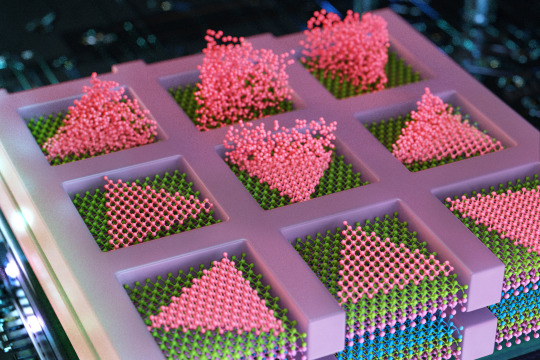

The electronics industry is approaching a limit to the number of transistors that can be packed onto the surface of a computer chip. So, chip manufacturers are looking to build up rather than out.
Instead of squeezing ever-smaller transistors onto a single surface, the industry is aiming to stack multiple surfaces of transistors and semiconducting elements — akin to turning a ranch house into a high-rise. Such multilayered chips could handle exponentially more data and carry out many more complex functions than today’s electronics.
A significant hurdle, however, is the platform on which chips are built. Today, bulky silicon wafers serve as the main scaffold on which high-quality, single-crystalline semiconducting elements are grown. Any stackable chip would have to include thick silicon “flooring” as part of each layer, slowing down any communication between functional semiconducting layers.
Now, MIT engineers have found a way around this hurdle, with a multilayered chip design that doesn’t require any silicon wafer substrates and works at temperatures low enough to preserve the underlying layer’s circuitry.
In a study appearing today in the journal Nature, the team reports using the new method to fabricate a multilayered chip with alternating layers of high-quality semiconducting material grown directly on top of each other.
The method enables engineers to build high-performance transistors and memory and logic elements on any random crystalline surface — not just on the bulky crystal scaffold of silicon wafers. Without these thick silicon substrates, multiple semiconducting layers can be in more direct contact, leading to better and faster communication and computation between layers, the researchers say.
The researchers envision that the method could be used to build AI hardware, in the form of stacked chips for laptops or wearable devices, that would be as fast and powerful as today’s supercomputers and could store huge amounts of data on par with physical data centers.
“This breakthrough opens up enormous potential for the semiconductor industry, allowing chips to be stacked without traditional limitations,” says study author Jeehwan Kim, associate professor of mechanical engineering at MIT. “This could lead to orders-of-magnitude improvements in computing power for applications in AI, logic, and memory.”
The study’s MIT co-authors include first author Ki Seok Kim, Seunghwan Seo, Doyoon Lee, Jung-El Ryu, Jekyung Kim, Jun Min Suh, June-chul Shin, Min-Kyu Song, Jin Feng, and Sangho Lee, along with collaborators from Samsung Advanced Institute of Technology, Sungkyunkwan University in South Korea, and the University of Texas at Dallas.
Seed pockets
In 2023, Kim’s group reported that they developed a method to grow high-quality semiconducting materials on amorphous surfaces, similar to the diverse topography of semiconducting circuitry on finished chips. The material that they grew was a type of 2D material known as transition-metal dichalcogenides, or TMDs, considered a promising successor to silicon for fabricating smaller, high-performance transistors. Such 2D materials can maintain their semiconducting properties even at scales as small as a single atom, whereas silicon’s performance sharply degrades.
In their previous work, the team grew TMDs on silicon wafers with amorphous coatings, as well as over existing TMDs. To encourage atoms to arrange themselves into high-quality single-crystalline form, rather than in random, polycrystalline disorder, Kim and his colleagues first covered a silicon wafer in a very thin film, or “mask” of silicon dioxide, which they patterned with tiny openings, or pockets. They then flowed a gas of atoms over the mask and found that atoms settled into the pockets as “seeds.” The pockets confined the seeds to grow in regular, single-crystalline patterns.
But at the time, the method only worked at around 900 degrees Celsius.
“You have to grow this single-crystalline material below 400 Celsius, otherwise the underlying circuitry is completely cooked and ruined,” Kim says. “So, our homework was, we had to do a similar technique at temperatures lower than 400 Celsius. If we could do that, the impact would be substantial.”
Building up
In their new work, Kim and his colleagues looked to fine-tune their method in order to grow single-crystalline 2D materials at temperatures low enough to preserve any underlying circuitry. They found a surprisingly simple solution in metallurgy — the science and craft of metal production. When metallurgists pour molten metal into a mold, the liquid slowly “nucleates,” or forms grains that grow and merge into a regularly patterned crystal that hardens into solid form. Metallurgists have found that this nucleation occurs most readily at the edges of a mold into which liquid metal is poured.
“It’s known that nucleating at the edges requires less energy — and heat,” Kim says. “So we borrowed this concept from metallurgy to utilize for future AI hardware.”
The team looked to grow single-crystalline TMDs on a silicon wafer that already has been fabricated with transistor circuitry. They first covered the circuitry with a mask of silicon dioxide, just as in their previous work. They then deposited “seeds” of TMD at the edges of each of the mask’s pockets and found that these edge seeds grew into single-crystalline material at temperatures as low as 380 degrees Celsius, compared to seeds that started growing in the center, away from the edges of each pocket, which required higher temperatures to form single-crystalline material.
Going a step further, the researchers used the new method to fabricate a multilayered chip with alternating layers of two different TMDs — molybdenum disulfide, a promising material candidate for fabricating n-type transistors; and tungsten diselenide, a material that has potential for being made into p-type transistors. Both p- and n-type transistors are the electronic building blocks for carrying out any logic operation. The team was able to grow both materials in single-crystalline form, directly on top of each other, without requiring any intermediate silicon wafers. Kim says the method will effectively double the density of a chip’s semiconducting elements, and particularly, metal-oxide semiconductor (CMOS), which is a basic building block of a modern logic circuitry.
“A product realized by our technique is not only a 3D logic chip but also 3D memory and their combinations,” Kim says. “With our growth-based monolithic 3D method, you could grow tens to hundreds of logic and memory layers, right on top of each other, and they would be able to communicate very well.”
“Conventional 3D chips have been fabricated with silicon wafers in-between, by drilling holes through the wafer — a process which limits the number of stacked layers, vertical alignment resolution, and yields,” first author Kiseok Kim adds. “Our growth-based method addresses all of those issues at once.”
To commercialize their stackable chip design further, Kim has recently spun off a company, FS2 (Future Semiconductor 2D materials).
“We so far show a concept at a small-scale device arrays,” he says. “The next step is scaling up to show professional AI chip operation.”
This research is supported, in part, by Samsung Advanced Institute of Technology and the U.S. Air Force Office of Scientific Research.
#2-D#2023#2D materials#3d#ai#AI chip#air#air force#applications#Arrays#Artificial Intelligence#atom#atoms#author#Building#chip#Chip Design#chips#coatings#communication#computation#computer#computer chips#computing#craft#crystal#crystalline#data#Data Centers#Design
2 notes
·
View notes
Text
Applications are still open!!! We still have a lot of slots to fill! :)
I y'all have any questions about the project, feel free to send us an ask!
CALLING ALL GORILLAZ FANS AND ANIMATORS!!
To celebrate the 20th anniversary of Demon Days, why not help recreate an iconic piece of Phase 2? Applications are now open for Gorillaz MTV Cribs Reanimated!
More information on how to apply in this document.

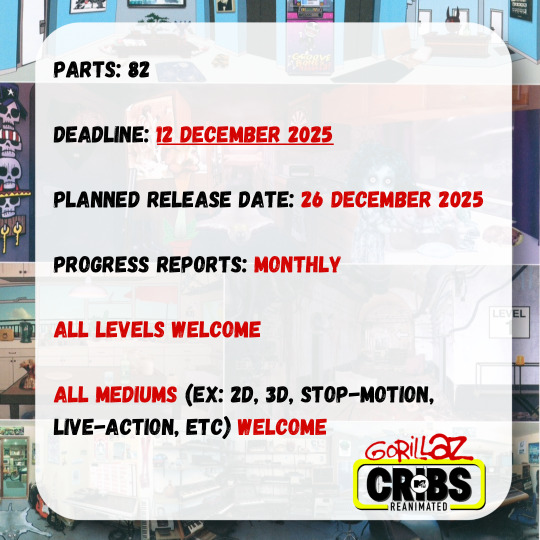
#gorillaz#animators needed#animators on tumblr#re animator#application#applications still open!#reanimated#murdoc niccals#2d gorillaz#2d animation#3d animation#stop motion#animation#gorillaz fanart#noodle gorillaz#russel hobbs#gorillaz mtv cribs reanimated
22 notes
·
View notes
Text
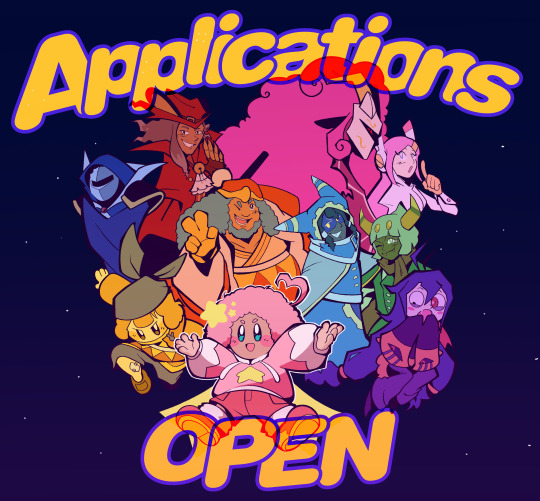
Hello everyone, the Gikabi Zine applications are finally open! ⭐️
We're a free illustration Kirby gijinka Zine, and we accept 2D, 3D, Cosplays and arts & crafts!!
⭐️Application form: [Link]
For more info, here's our carrd and our explanation post, feel free to ask questions regardless. [RBs are appreciated!]
Drawn by @michiriii Graphic design by @deefighter2739 Featuring gikabi designs from @michiriii, @tea-lol-here, @martisno and @somethinginworl
#Open Zine#Zine#Free Zine#Gikabi#Kirby gijinka#Kirby#Zines#Zine Application#Artists wanted#Art#Daroach#Galacta Knight#Bandana Waddle Dee#King Dedede#Meta Knight#Magolor#Taranza#Susie Haltmann#Gooey#Zine apps open
320 notes
·
View notes
Text
ENCORE ANIMATION APPLICATION + CAST LIST
First off, animation applications are NOW OPEN!! Here is the link for animation applications: (LINK)
2D/Traditional animation, 3D animation, cosplay. puppets, etc are accepted!

(gif made by encore staff member: @hay-ilea)
and now for our cast!
Caine: AshMcShan
Pomni: EMKproductions
Ragatha: MemeQueme @marinette-the-clarinet
Jax: Zillak
Kinger: GiantArcher @giantarcher21
Gangle: dragon_creates @dragon-creates
Zooble: whynotwafflefr1es
Bubble: ShadesofCallum @shadesofcallum
Gloink Queen: LemonMoon @grimbiliah
Moon: Dippy1
Congrats to those who got a part in the project! Also thank you to everyone who auditioned! We had many great entries and everyone did amazing!
Overall, the project is moving forward very well! Now it is time for the animators to shine!
#tadc#tadc caine#tadc gangle#tadc jax#tadc kinger#tadc pomni#tadc ragatha#tadc zooble#the amazing digital circus#tadc encore#tadc reanimated#the amazing digital circus encore#animators on tumblr#animators#animation#animators needed#caine#pomni#jax#kinger#gangle#ragatha#zooble
265 notes
·
View notes
Text
Alright folks ! Get in if you can !
The application for the summer edition of our fanzine are open for all artists and authors who wishes to participate !
I will be accepting as many people as i can once again so give it a try :)
‼️THESE ARE OPEN FOR 3 WEEKS UNTIL THE 8th OF APRIL ‼️
Please note that everyone will have the entirety of may and june to work on their part and send them to me (subject to change, delay is acceptable in some cases), e-mail will be send before the end of april to garante that everyone got into the discord by may !
For now we are planning an August release for the fanzine, may vary depending on how everything goes.
#mcsm#mcsm fanzine#minecraft story mode#mcsm fandom#mcsm art#mcsm fanart#mcsm fanfic#i will not make these forms last longer#please for the love of fish i dont want a repeat of last time#3 weeks not more not less !!!
76 notes
·
View notes
Note
Howdy, we've never talked but I'm the one behind that new earthspark au that I just started.
I wanted to ask, since I want to be more than a writer; what's some advice you have on drawing transformers as a whole? Doesn't have to be too in-depth as I'm confident in my ability to just grasp the concepts, if you get what I'm trying to say lol
I'll try! In specifically earthspark because of it being in 3D animation they were able to get alot more details into different designs (things that might be awkward if animated in 2D) such as Bee having a little scar on one eye lid.
For me I find it helpful to breakdown the characters into their overall shapes, looking at how things overlap, ideally you'd be able to look at character sheets but as far as I can find there isn't any available publicly unlike tf animated and prime.
I'll use Bee as an example (because I like his design) say Bumblebees main shape is a hexagon (like honey comb) his head is loosely this shape and small parts of his body like his windscreen having the bottom of a hexagon. This isn't exactly applicable to every character but usually they can be broken down into loose shapes.
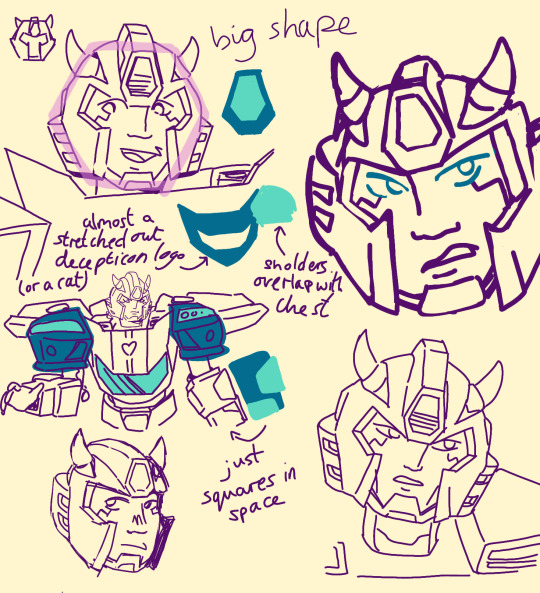
i have no idea if this is any help but it's fun to think about how transformers designs work and look!
#transformers#transformers earthspark#earthspark#earthspark bumblebee#maccadams#mcaddams#yapping#sock rock art
44 notes
·
View notes
Note
Since your in multimedia arts is it okay if you could show one of your projects? It's totally up to you ofcourse I'm just really curious
UHM.... I UH.. I KIND OF.. I'M NOT REALLY.. GOOD.. AHHAHAA BUT I'M TRYING 🎀
Projects I'm proud of I guess?
1st year:
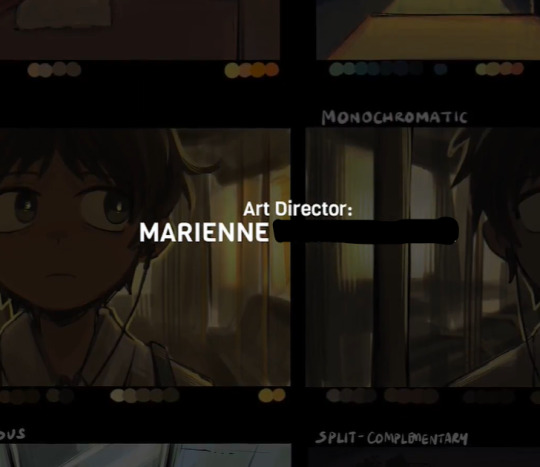
Was an art director, storyboard artist, background & character designer, lighting/colorist, and clean-up artist in a short 2D animation project for finals
Had done project exhibits
2nd year:
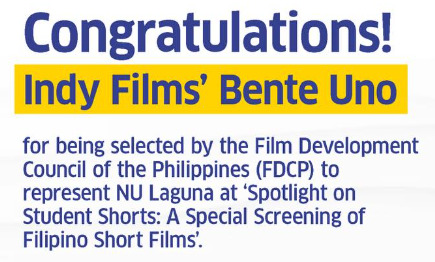

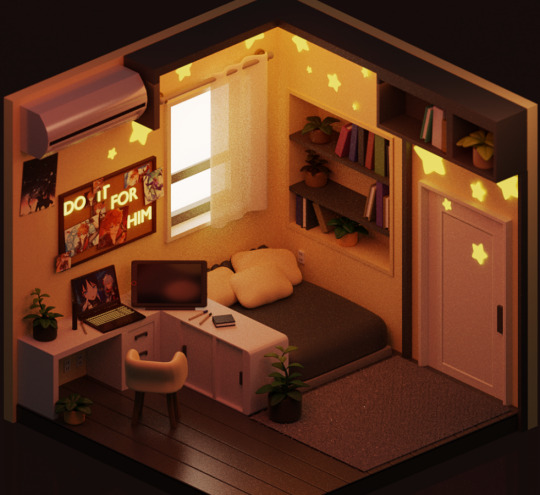

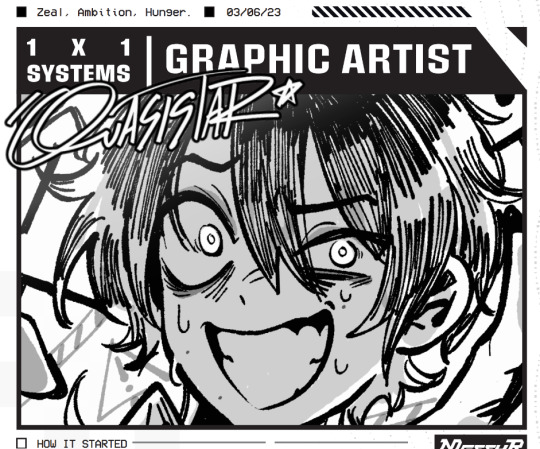
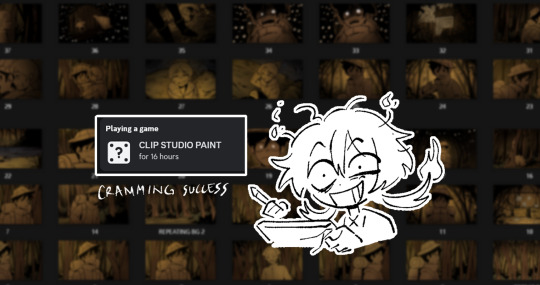
Part of Indy Films team as sound designer
Worked on storyboards and art lead ( VFX, E-games, World-literature )
Had done 3D modeling, rigging, and 3D animation (blender), as well as game dev/ minimal coding (GDevelop, unity, Visual Studio)
Lead Game Designer (project: puzzle platformer game)
Had done projects for photography & interactive media/novels
Passed the official license exam for Adobe InDesign
One of the Graphic designers for the school's Esports organization
3rd year 1st sem:
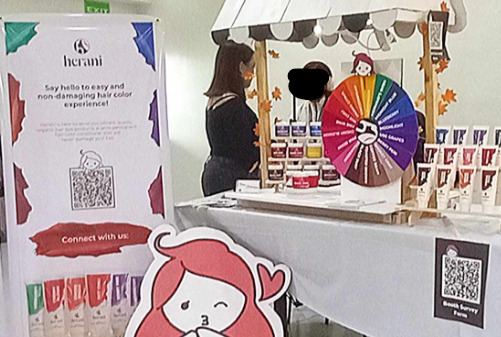
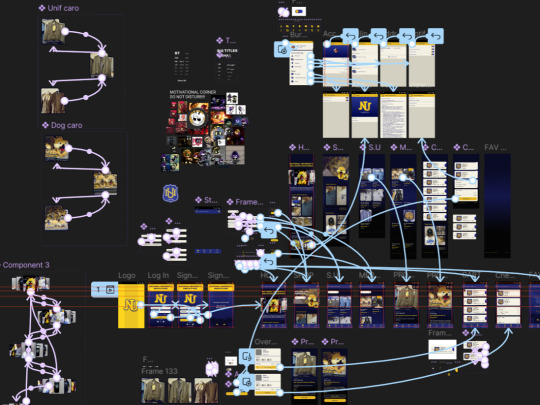
Storyboard Artist for an ad, Creative Assistant & Digital Media Tech for branding (advertising and brand communication project)
Had done mid-fidelity wireframes
Designed a mobile application for the school's merchandise store
2nd sem (PRESENT)
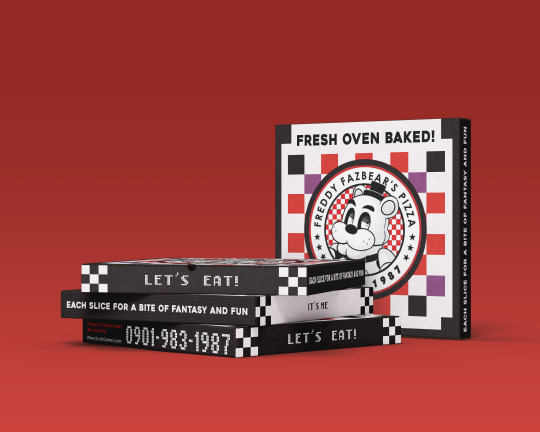
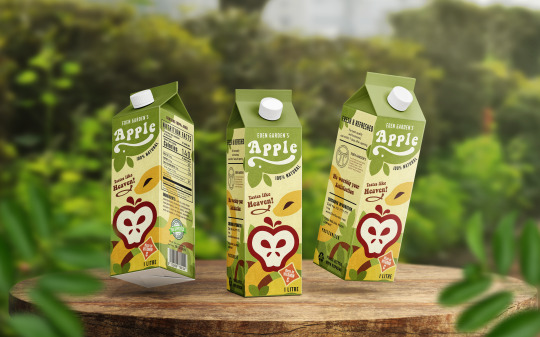
Currently working as a storyboard Artist and Makeup Artist for a music video for an Indie Singer.
PS: Yes, we work on real brands, local artists, clients, and more.
#messyr#atp im likely to be a storyboard artist lMAOOOOOOO#funny and all that jazz. I actually have failed 2 major subjects and will retake them by the next s.y#bmma#multimedia#multimedia art
110 notes
·
View notes
Text
🌹💍Applications Open! 🌹💍
Hello everyone! Great news! Applications are now officially open!
You can find them here: Artist Application, Writer Application, 2D/3D/Cosplay/Other Application.
We also have a Carrd with all the information you will need. (it is a slight work in progress yet, but it will be finished within the next few days)
Please do not hesitate to reach out to us with any questions you might have about the zine or the application process. We are excited to work with everyone!

(reblogs are very much appreciated to spread the word 😉)
#bg3 fanfiction#bg3 fandom#bg3 fanart#bg3 tav#astarion#gale dekarios#wyll ravengard#bloodweave#lae'zel#karlach#bg3#shadowheart#bg3 rolan#zevlor#dammon#alfira#bloodpact#shadowzel
33 notes
·
View notes
Text
Hatsune Miku: The First Virtual Pop Diva
To begin, I must explain what VOCALOID is. It is a voice synthesis software application, capable of singing, developed by Yamaha Corporation. It allows users to generate a song simply by writing the lyrics and melody. Depending on which VOCALOID is used, the voice of the song will vary. In 2004, Crypton Future Media released their first Vocaloid with the software VOCALOID01, called Meiko.

Although Meiko, and later Kaito (2006), did not achieve great success, Crypton Future Media, in 2007, launched Hatsune Miku through the VOCALOID2 software (an update to the first version). Her name translates to "First Sound of the Future." Hatsune Miku was the first virtual vocal character and remains the most famous to this day.

She quickly went viral on a Japanese video-sharing platform (Nico Nico Douga), where users listened to the songs and created collaborative content. Starting from the original song, other users on the platform would create illustrations, 2D and 3D animations, and remixes, demonstrating the various possibilities of using the software for multimedia content creation.
After this initial success, various projects involving Hatsune Miku began, one of the most important being the release of her own video game, Hatsune Miku: Project Diva (2009) a rhythm game released by Sega for the PlayStation Portable, featuring songs such as 'World is Mine' and 'Levan Polka. That same year, Hatsune Miku made her first guest appearance at a concert (Animelo Summer Live), where she was projected on a 2D screen.

A few months later, on August 31, the “Miku FES'09 (Natsu)” took place, where Hatsune Miku performed as the first hologram singer. On March 9, 2010, Miku's first solo live performance titled “Miku no Hi Kanshasai 39's Giving Day” took place, becoming one of her most viral and visited concerts on the internet to this day.

Although the title of this blog is "Hatsune Miku: The First Virtual Pop Diva," her music varies in terms of musical genres. This is due to what I explained earlier: anyone can use the Hatsune Miku software and can use her voice to create the music they desire. Therefore, she is not only the first virtual singer and the first hologram singer, Hatsune Miku is a massification tool for music creation.

21 notes
·
View notes
Text
Summer 2025 Game Development Student Internship Roundup, Part 2
Internship recruiting season has begun for some large game publishers and developers. This means that a number of internship opportunities for summer 2025 have been posted and will be collecting applicants. Internships are a great way to earn some experience in a professional environment and to get mentorship from those of us in the trenches. If you’re a student and you have an interest in game development as a career, you should absolutely look into these.
This is part 2 of this year's internship roundup. [Click here for part 1].

Associate Development Manager Co-op/Internship - Summer 2025 (Sports FC QV)
Game Product Manager Intern (Summer 2025)
Music Intern
EA Sports FC Franchise Activation Intern
Associate Character Artist Intern
Client Engineer Intern
Visual Effects Co-Op
Associate Environment Artist Co-Op (Summer 2025)
Game Design Intern (Summer 2025)
Game Design Co-Op (Summer 2025)
Concept Art Intern - Summer 2025
UI Artist Intern - Summer 2025 (Apex Legends)
Assistant Development Manager Intern
Global Audit Intern
Creator Partnerships Intern - Summer 2025
Technical Environment Art Intern - Summer 2025 (Apex Legends)
Intern, FC Franchise Activation, UKI
Tech Art Intern - Summer 2025 (Apex Legends)
Software Engineer Intern
UI Artist Intern
Game Designer Intern
FC Franchise Activation Intern
Software Engineer Intern
Product UX/UI Designer
Software Engineer Intern
Enterprise, Experiences FP&A Intern
Game Designer Intern
Software Engineer Intern
Development Manager Co-Op (Summer 2025)
Software Engineer Intern
PhD Software Engineer Intern
Character Artist Intern
2D Artist Intern - Summer 2025
Software Engineer Intern (UI)
Entertainment FP&A Intern
Game Design Co-Op (Summer 2025)
Data Science Intern
Production Manager Intern
Software Engineer Intern
Channel Delivery Intern
FC Pro League Operations Intern
World Artist Intern
Experience Design Co-Op
Media and Lifecycle Planning Intern
Software Engineer Intern - Summer 2025
Software Engineer Intern - Summer 2025
Intern, FC Franchise Activation, North America
Creative Copywriter Intern
Game Design Intern
Social Community Manager Co-Op
Business Intelligence Intern
Software Engineer Intern (F1)
Total Rewards Intern - MBA level

Intern - Office Administration
Digital Communication Assistant – Internship (6 months) february/march 2025 (W/M/NB)
International Events Assistant - Stage (6 mois) Janvier 2025 (H/F/NB)
Intern Cinematic Animator
Research Internship (F/M/NB) - Neural Textures for Complex Materials - La Forge
Research Internship (F/M/NB) - Efficient Neural Representation of Large-Scale Environments - La Forge
Research Internship (F/M/NB) – High-Dimensional Inputs for RL agents in Dynamic Video Games Environments - La Forge
Research Internship (F/M/NB) – Crafting NPCs & Bots behaviors with LLM/VLM - La Forge
3D Art Intern
Gameplay Programmer Intern
Intern Game Tester
Etudes Stratégiques Marketing – Stage (6 mois) Janvier 2025 (F/H/NB)
Localization Assistant– Stage (6 mois) Avril 2025 (F/H/NB)
Fraud & Analyst Assistant - Stage (6 mois) Janvier 2025 (F/H/NB)
Payment & Analyst Assistant - Stage (6 mois) Janvier 2025 (F/H/NB)
Media Assistant – Stage (6 mois) Janvier 2025 (F/H/NB)
IT Buyer Assistant - Alternance (12 mois) Mars 2025 (H/F/NB)
Event Coordinator Assistant - Stage (6 mois) Janvier 2025 (H/F/NB)
Communication & PR Assistant - Stage (6 mois) Janvier 2025 (F/H/NB)
Brand Manager Assistant - MARKETING DAY - Stage (6 mois) Janvier 2025 (F/N/NB)
Manufacturing Planning & Products Development Assistant - Stage (6 mois) Janvier 2025 (H/F/NB)
Retail Analyst & Sales Administration Assistant - Stage (6 mois) Janvier 2025 (H/F/NB)
UI Designer Assistant - Stage (6 mois) Janvier 2025 (F/M/NB)
Esports Communication Assistant
Machine Learning Engineer Assistant – Stage (6 mois) Janvier/Mars 2025 (F/H/NB)
Social Media Assistant – Stage (6 mois) Janvier 2025 (F/H/NB)
36 notes
·
View notes
Note
Hey ! I have a little question : how do you start to draw ? I want to start but idk how-
And, for the digital art, what app to used for it ?
(I'm sorry for my bad english, it's not my first language, in fr :
Hey ! J'ai une petite question : comment on commence a dessiner ? J'aimerai commencer mais jsp comment-
Et, pour l'art digital/digital art, quel application utiliser ?)
Bonjour Anon ^^
Bonnes questions! 💗
On va y aller en français parce que, comme disait le Roi de France, "Car tel est notre plaisir" et puis parce que je l’ai déjà expliqué en anglais quelque part dans mon tag #arttechnique donc, pour une fois, la communication se fera en Langage de Grenouille. 🇫🇷
Pour commencer sache que tu as ouvert la boite de Pandore, la réponse va donc être longue. Alors, « comment on commence à dessiner ? ».
1 - Papier/Crayon. C’est loin d’être une plaisanterie, on commence avec un papier et un crayon. Pas besoin d'avoir du matériel sophistiqué et onéreux, j'ai commencé avec le crayon et le carnet à la con de chez Carrefour. De plus, quand tu vois ce que fait Alan Lee avec juste le dit crayon, tu n'as pas besoin de plus. C'est vraiment très bien pour s'exercer/démarrer. Après, si tu veux commencer directement en digital, tu peux le faire bien évidemment soit avec un iPad soit avec un ordinateur et une palette graphique mais très honnêtement, le papier/crayon offre une bonne base
2 - S'y mettre. Ça peut paraitre con comme conseil mais c'est comme à la piscine il va bien falloir rentrer dans l'eau, ne serait-ce que dans le petit bain. C'est bien beau d'avoir du matériel et de se répéter qu'on "va s'y mettre un jour" mais si on repousse l'échéance, ça ne va pas marcher. Il faut se convaincre que Rome ne s'est pas fait en un jour et qu'au début, ça va être tordu et que tu vas dessiner n’importe quoi. La procrastination au nom du perfectionnisme est un mal réel mais arriver à l'occulter est un belle victoire.
Pour ce faire, on commence doucement par gribouiller des choses qu'on aime. Conseil qui sonne sans doute comme une lapalissade absolue mais au début, je dis bien au début, on peut rester dans sa petite zone de confort pour booster la motivation. Tu aimes les chats ? Dessine un chat. Tu aimes les fleurs ? Dessine une pivoine. Tu aimes le ballet ET Emmanuel Macron ? Bref, tu sais ce qu'il te reste à faire (on ne kink shame pas, je suis sure qu’il y a des amateurs quelques part). Cependant, petit à petit, il va falloir prendre plus de risques et se forcer un peu à dessiner des choses qu'on n'aime moins pour progresser mais au commencement, il n'y a pas de mal à gribouiller Les Chevaliers du Zodiac, n'importe comment.
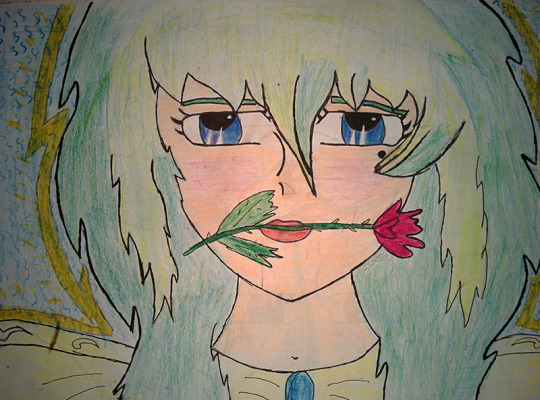
Le Chevalier du Poisson après s’être pris un mur. J'avais 8 ans ok ?
Bon, je mets un « cut » parce que ça ne va pas être gérable.
3 - Suivre des tutos et ne pas avoir peur de l'aspect technique surtout quand on commence à aborder l'anatomie et la perspective. Et c'est là, qu'il va falloir sortir un peu de sa zone de confort pour faire des exercices pour pratiquer les ombres et lumières, la perspective, comprendre les points de fuites, les poses dynamiques. Il y a plein de tutoriels sur YouTube, tu as aussi des bouquins mais je pense qu'une vidéo est plus parlante. C'est vraiment TRÈS utile. Tu as des vidéos comme "apprendre à dessiner" ou "perspective pour débutant", "la théorie des couleurs pour les nuls", etc...C'est là que tu vas voir que pour dessiner un chat, un visage, un bateau il y a des règles pour simplifier une forme, un visage, un corps. Alors oui, c'est chiant de dessiner 12 fois la même main ou la même sphère éclairée différemment mais ça sert. Bref, commencer à dessiner, ça va être commencer à comprendre comment transposer la réalité en « 3D » vers un support « 2D », la feuille ou le canevas Photoshop, peindre ce que l’on voit et non pas ce que l’on croit voir, décomposer les formes, comprendre les couleurs. Une fois encore, ça va prendre du temps, mais ça viendra.
Pareil pour les applis de dessin que tu vas utiliser si tu commences en digital. Si tu ne sais pas faire quelque chose, va suivre des tutos sur Youtube. Il y a aussi des reels sur Instagram qui ne sont pas mal du tout car ils montrent des "trucs" comme des raccourcis clavier ou des façons de modifier les pinceaux (brushes) de Photoshop ou Clip Studio Paint.
4 - S'exercer par gribouiller tout et n'importe quoi, faire des croquis de...cafetière, bouquin, chaussures, prise électrique, la petite cousine, le gros voisin, la dame du pressing. 1) c'est marrant et 2) les défis techniques ne sont pas toujours là où on le croit 3) ces exercices permettent de comprendre ce dont je te parlais plus haut s’agissant de la décomposition des formes ainsi que de la façon dont la lumière frappe les objets.
5 - Utiliser des références. Je ne le dirais jamais assez, utiliser des références n’est pas tricher ! Des illustrateurs confirmés comme Alex Ross ont un studio où ils prennent des photos de leurs assistants, leurs amis, eux-mêmes, pour avoir une base de travail. Si tu veux dessiner un bateaux pirate, va chercher une photo de bateau pirate sur Internet. On n’est pas « un vrai artiste » parce qu’on dessine de tête ou sans gommer. 🙃
6 - Travailler régulièrement pour progresser. Je sais c'est dur de trouver du temps avec le lycée, la fac, le boulot, les transports, la vie de famille, etc...mais le mieux est d'arriver à dessiner un peu régulièrement, ça sera plus efficace que deux heures toutes les deux semaines. Les cours de géo sur les bassins sédimentaires sont faits pour ça. J'AI RIEN DIT.
7 - Ne pas se décourager. Je me répète mais les artistes étant leurs pires critiques, le chemin vers la satisfaction va être long. Tu vas commencer par copier tes artistes préférés et ta tête va exploser car un jour tes dessins vont ressembler à Mucha et le lendemain ça sera à One Piece et le jour suivant Moebius ou un web-comic coréen. C'est encore plus dur pour les artistes débutants aujourd'hui car ils sont confrontés, Tiktok après Tiktok, tableau Pinterest après tableau Pinterest, à un déluge constant d'influences, à une stimulation artistique telle qu'elle en devient inaudible pour un cerveau toujours plus sollicité. Savoir ce qu'on veut, se concentrer, construire son style sans se perdre est, je pense, un des grands défis des artistes débutants en 2024.
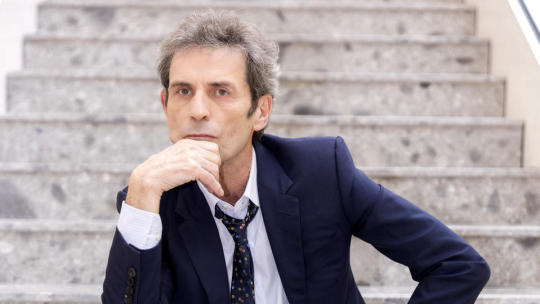
C'était joliment dit. Merci d'avoir suivi Ce soir ou jamais, on se retrouve demain soir.
Il va surtout falloir que tu prennes en compte en tant que débutant que quand tu vas commencer, tes progrès vont être proche de ça :
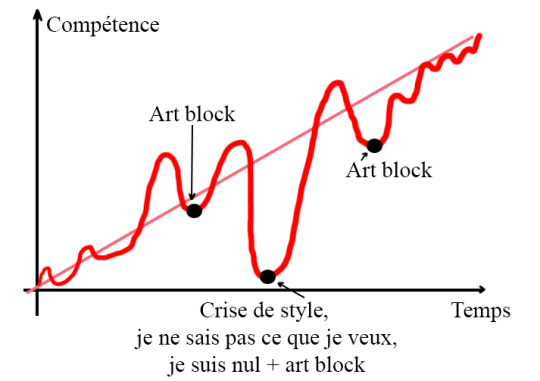
Ils ne seront pas linéaires mais, tu progresseras. Un petit "art block" de temps en temps, du découragement, mais surtout beaucoup de joie et de satisfaction quand tu auras dessiné quelque chose qui te tiens à cœur pour la première fois, même si tu détesteras ce même dessin deux mois plus tard, c'est ça être un artiste, félicitations!
8 - Ne pas se comparer à des illustrateurs de folie. Paix à son âme mais si tu vois une vidéo du regretté Kim Jung Gi qui dessinait des fresques entières sans traits de construction, à main levée, tu vas te dire "Mais punaise, pourquoi j'essaie ?". N'y penses pas, fais ta vie, à ton rythme. Pareil avec les gens de ton âge. Ne te compare pas à un mec de 13 ans à Singapour qui dessine déjà comme un artiste confirmé. On s'en fout. C'est une exception, grand bien lui fasse, on l'embrasse, cœur sur lui, mais ce n’est pas toi. Bref, l'inspiration OUI, la comparaison NON.
9 - Prendre des cours de dessins. Être autodidacte et s’entrainer tout seul, c’est bien, mais prendre des cours si on est perdu n’est absolument pas honteux. Il y a des cours municipaux, des ateliers parfois à la mairie, à la médiathèque de ta ville, etc...Alors oui, tu vas dessiner un pot de fleurs et une pomme avec Mamie Geneviève, retraité de la Mairie de Brie-Comte-Robert mais tu vas avoir un prof qui va t'expliquer les bases si tu sens que tu ne vas pas y arriver seul.
Et, pour l'art digital/digital art, quel application utiliser ?
Moi, j'utilise Photoshop mais c'est payant (et assez cher)
Pour commencer, je te recommande d'autres applications bien moins chères comme Krita (gratuite) ou, si tu as un iPad, Procreate. C'est environ 8€ (ça a peut-être augmenté depuis le temps où je l'ai acheté) mais pour tout ce que cette appli peut faire, c'est donné. Moins connue mais également gratuite, Fire Alpaca, très honorable aussi!
Clip Studio Paint est également très bien. Tu peux l'avoir soit avec un système d'achat unique, soit un system de souscription comme tu peux le voir ici.
Voilà ! Bref, il faut s’y mettre, se lancer, dessiner n’importe quoi pour se faire la main, suivre des tutos, parce que la technique c’est important, utiliser des références et ne pas se décourager.
J’espère avoir répondu à ta question et comme disait Marie-Pierre Casey :

"Je ne ferai pas ça tous les jours!" (même si personne ne m’a demandé de faire aussi long).
Si vous n’avez pas la réf, demandez à vos parents.
Passe un bon dimanche et courage ! On reste motivé !! 💗
79 notes
·
View notes
Note
Please correct me if I'm wrong, but what I believe OP is referencing that in Fine Arts and other similar 2D drawn/painted/etc arts, the general goal of taking photos is to keep the light as flat as possible so that the photo itself has no change in values aside from the actual ink/paint/etc. I.e. in taking a picture of the Mona Lisa, you generally don't see a cast shadow from, say, a tree branch (ignoring that it's in a museum, of course with minimal lighting for preservation reasons). You don't want to see shadows from where an artist may have pushed down the pencil too hard on the paper, or the crags in oil paintings (typically). It's why scanners got pretty encouraged for high res/no shadows/etc in early online art communities.
However, I would also like OP to check out art from the 60s and 70s I believe, where a lot of artists did play with the reflection of light and shadow in their works, and while a good lot of them are 3D or Installation artists, there are others that working more 2D, and also more contemporary artists that specifically use light and shadow play in their work (I forget the artist's name, but there's one who uses lights to create window glows in his ink and pencil drawings), and how shadow puppetry with flat, hinged cut outs was a very early style in animated films.
So please, play with shadows and light in your flat/drawn artworks if it makes you happy! Art is made to play, and there are some extremely unique ways to incorporate your surroundings into that work. And who knows, you could be the one to start another movement. That flat lighting has its place in college portfolios, but not every piece of art can be so neatly packaged.
Art preservation has two main ways to document fine art. Scanning or photographing.
The standard photographic way is typically to use a very high resolution medium format camera (Usually a Phase One) with a lens with minimal distortion. Two lights are placed on either side of the painting angled at 45 degrees toward the center. And this creates a very evenly lit photograph with minimal shadows. Color charts are placed near the painting in the same light so the photo can be calibrated later on.

For museum quality documentation, this process may be done in a stitched panorama to increase the overall resolution. But there are also pixel shift technologies where the camera can offset the physical sensor by one pixel in any direction to allow capturing maximum detail. A 100 megapixel camera essentially becomes 400 megapixels. It's a very finicky process requiring concrete floors and sturdy mounts (any microscopic movement will ruin the process), but it produces amazing results when captured by an experienced professional.
Scanning is best if the form factor of the artwork allows for it. There are high end "touchless" scanners that run the art through on a conveyor belt system. This also results in a pretty flat looking representation.
youtube
One technique that is becoming popular is 3D microscopy. This allows them to capture the fine texture of the painting. They can also put the painting in any lighting environment after the fact. So you can do shadowless, even lighting or you can do a side light that rakes across the texture, allowing you to see paint cracks and brush strokes more defined.
Here is the Girl with the Pearl Earring's eye catchlight, which apparently is a bit of a glob.

There is a video on this process including a huge 3D print where people can physically experience the texture of the painting.
youtube
And you can check out the 3D scan of the Girl with a Pearl Earring here.
With VR headsets growing in popularity, I imagine these professional tools for creating 3D representations will become more accessible. And people will be able to scan their own art in a similar fashion. Canon is already developing a dual lens system that might be applicable.
19 notes
·
View notes
Text
Interest Check Results!
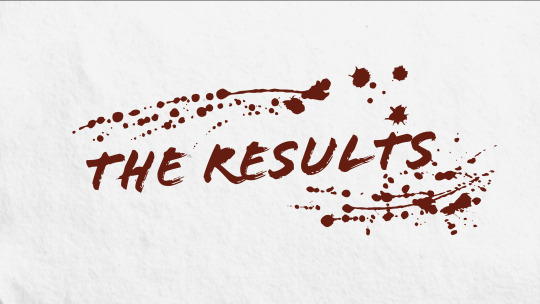
39 people ended up taking the interest check. Due to the number of people interested, everyone who applies to contribute will be accepted. Contributor applications will open on November 4th
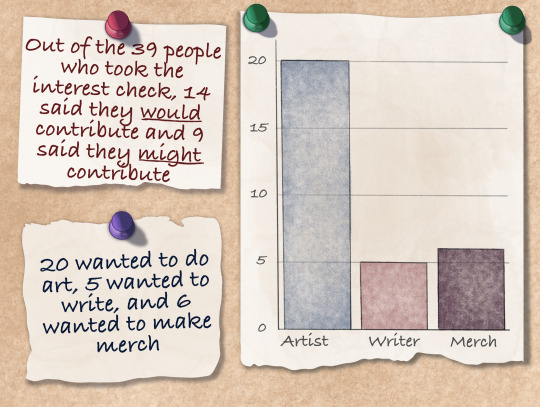
39 people took the interest check. When asked "Are you interested in participating in this zine?" 16 people answered No, 14 answered Yes, and 9 answered Maybe.
When asked "If you are interested in participating, how would you like to be involved?" 20 answered Art, 5 answered Writing, and 6 answered Digital Merch.
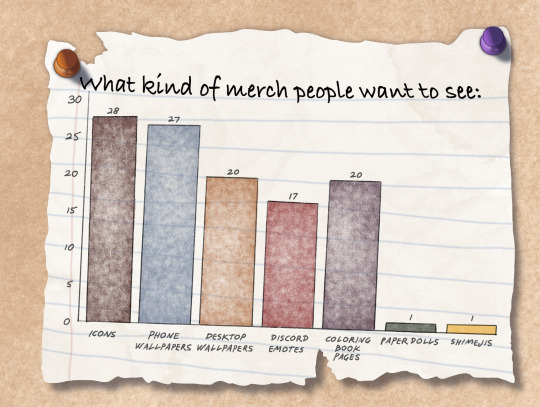
When asked "What kind of merch would you be interested in seeing?" the answers were:
Icons- 28
Phone Wallpapers- 27
Desktop Wallpapers- 20
Discord Emotes- 17
Printable Colouring Book Pages- 20
Additionally, 2 people wrote in suggestions. One wrote "Printable paper dolls (either 2d or 3d)" and another wrote "Remember those little things you could put on your computer screen that would be like little pets? that." I actually didn't remember what those are, but research showed they are called shimejis
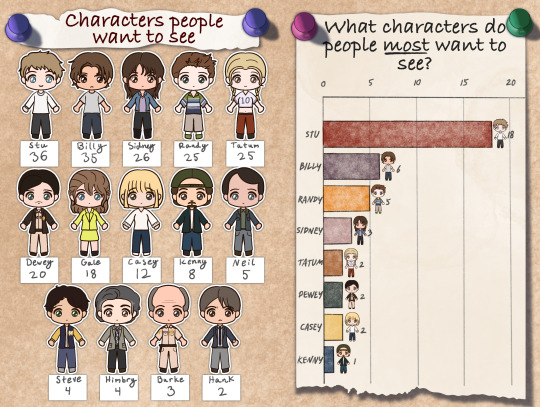
This is how many people voted for each character when asked "Which characters would you be interested in seeing?":
Stu Macher- 36
Billy Loomis- 35
Sidney Prescott- 26
Randy Meeks- 25
Tatum Riley- 25
Dewey Riley- 20
Gale Weathers- 18
Casey Becker- 12
Kenny (Cameraman)- 8
Neil Prescott- 5
Steve Orth- 4
Arthur Himbry- 3
Sheriff Burke- 3
Hank Loomis- 2
When asked "Which character would you be MOST interested in content of?" 18 said Stu. 6 said Billy. 5 said Randy. 3 said Sidney. Tatum, Dewey, and Casey all got 2 votes, and 1 said Kenny. Stu is the most popular, which didn't surprise me, but I was surprised someone voted for Kenny!

When asked "Are you interested in ship or general (non-shipping) content?" 6 said Shipping, 3 said General, and 30 said Both.
When asked "What ships are you interested in seeing?" these were the results:
Billy/Stu- 33
Sidney/Tatum- 20
Gale/Dewey- 14
Sidney/Billy- 9
Sidney/Randy- 8
Stu/Tatum- 5
Billy/Stu/Randy- 4
Randy/Stu- 3
I am only interested in general content- 3
One person also wrote in "YES. (all of them)".
Carrd
#took me a little longer to get this one out than I thought bc my little brother took my charger to school#scream 1996#scream#scream franchise#scream 1996 zine#interest check results#zine interest check#fanzine#fandom zine#zine#scream movie#sidney prescott#tatum riley#stu macher#randy meeks#billy loomis#gale weathers#dewey riley#casey becker#ghostface#horror movies#slasher movies#slashers#stuilly#tatney#dewey x gale
24 notes
·
View notes
Text

An unprecedented feat: Printing 3D photonic crystals that completely block light
Photonic crystals are materials with repeating internal structures that interact with light in unique ways. We can find natural examples in opals and the vibrant colored shells of some insects. Even though these crystals are made of transparent materials, they exhibit a "photonic bandgap" that blocks light at certain wavelengths and directions. A special type of this effect is a "complete photonic bandgap," which blocks light from all directions. This complete bandgap allows for precise control of light, opening up possibilities for advancements in telecommunications, sensing, and quantum technologies. As a result, scientists have been working on different methods to create these advanced photonic crystals. While 1D and 2D photonic crystals have been used in various applications, unlocking the secret to producing 3D photonic crystals with a complete photonic bandgap in the visible range has been fraught with challenges due to the need to achieve nanoscale precise control of all three dimensions in the fabrication process.
Read more.
33 notes
·
View notes